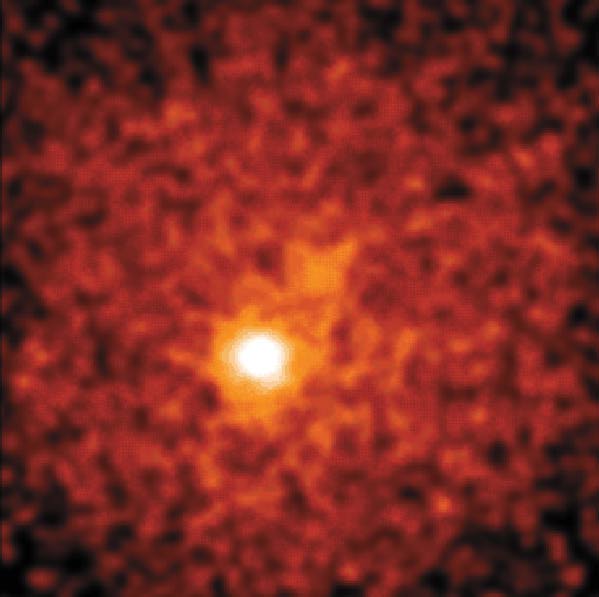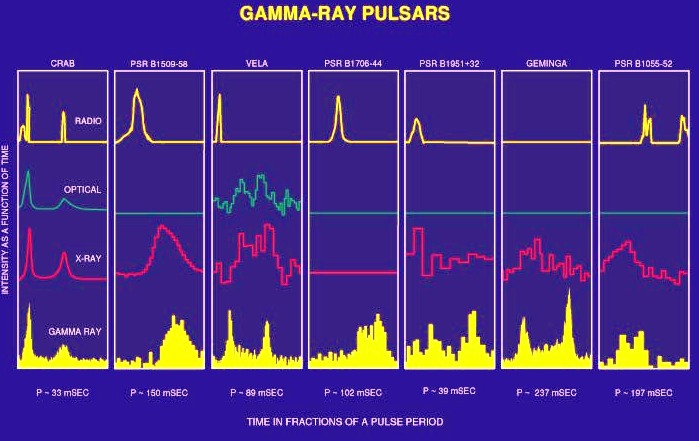| Pulsars
The Crab pulsar, which is one of the most important objects in the sky
at any wavelength, is a standard candle of gamma-ray astronomy - strongly
emitting photons at all energies. The neutron star sitting in the remnant
of the supernova which dominated the sky in 1054 A.D is rotating 30 times
per second. With each rotation a beam of gamma rays sweeps past the Earth
creating the effect of pulsations. Pulsars have been likened to spinning
magnets. This description, although somewhat accurate, hides the complexity
that exists in the incredibly strong magnetic fields associated with
neutron
stars and the unknown structure of the collapsed star. Careful study of
the gamma-ray energy distribution, and pulse shape of the Crab pulsar have
supplied needed information about how gamma-ray pulsars work. Before
Compton,
only two gamma-ray pulsars were known, the Crab and Vela pulsars. There
are now seven: PSR 1509-58, PSR 1706 44, PSR 1055-52, PSR 1951+32 and
Geminga
all being added to the list. |
The names of most of these are based on coordinates from radio
observations.
In fact, there are around 550 radio pulsars known at this time. The fact
that there are only seven gamma-ray pulsars shows how special the
environment
must be to create gamma rays. The gamma-ray pulsars tend to be of the
young,
rapidly-spinning variety. Each pulsar has unique characteristics and the
pulse shapes can be highly dependent on the energy range. Knowing why some
pulsars emit gamma rays and some don't, how the pulse shapes in each energy
range arise, and what the gamma-ray photons say about the structure and
environment of the neutron star, are at the heart of gamma-ray pulsar
research.
The whimsically named Geminga is of a somewhat different nature. The name,
which means "is not there" in a certain Italian dialect, refers to the
fact that there was no apparent counterpart at any other wavelength to
the very strong gamma-ray source first detected in the 1970's. Geminga
was one of the large class of unidentified gamma-ray sources, the nature
of which is still largely unknown. In Geminga's case, however, EGRET
observations
verified the x-ray detection of pulsations in the flux from
Geminga, |
positively identifying it as a gamma-ray pulsar. Oddly, Geminga still
has not been detected at radio wavelengths. Whether the Geminga story is
a hint at the nature of the other unidentified sources or simply an anomaly
is an important area of current research.
Active Galaxies
Back to our anticenter image, just slightly away from the Crab, the
gamma-ray emitting active galaxy known as PKS 0528+134 is also clearly
detected in the COMPTEL energy range.

One of the first Compton surprises was the EGRET detection of
the gamma-ray blazar 3C 279. The only previously detected gamma-ray blazar,
3C 273 can be seen to be weakly emitting. |

